Mastering Monitor Resolution: Navigating Remote Access with Clarity and Precision
What is Monitor Resolution?
Monitor resolution refers to the number of distinct pixels in each dimension that can be displayed on a screen.
A pixel, short for "picture element," is the smallest unit of a digital image or graphic that can be displayed and manipulated on a digital display screen. Essentially, pixels are the tiny dots that collectively make up the image you see on your screen. Each pixel acts as a miniature building block of color and brightness, contributing to the overall picture.
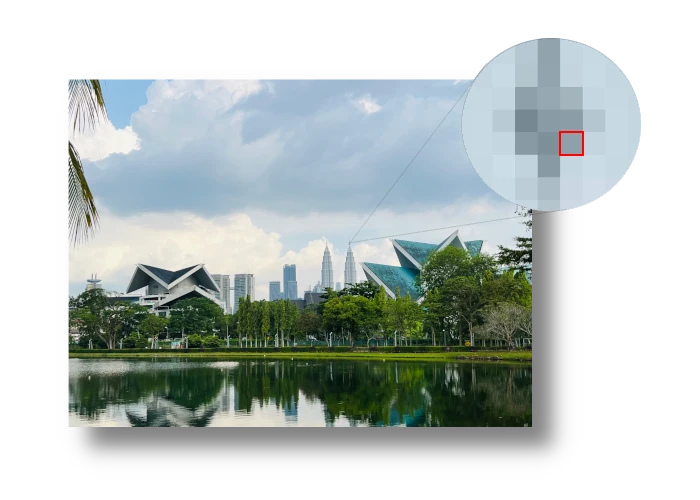
Resolution is typically expressed as width × height; for instance, a resolution of 1920×1080 means there are 1920 horizontal pixels and 1080 vertical pixels. The more pixels a monitor can display, the finer and more detailed the image.
Common Resolution Standards
There are several standard resolutions, each suited for different needs. As a computer user, you'll most likely encounter Full HD (1920 x 1080) and 2K (2560 x 1440) resolutions, as they are the most widespread among computer monitors. 4K (3840×2160) is preferred for high-definition gaming and professional graphic design; however, it is not as typical for computer monitors due to its higher cost and the requirement for a very powerful graphics adapter, especially in the context of computer games.
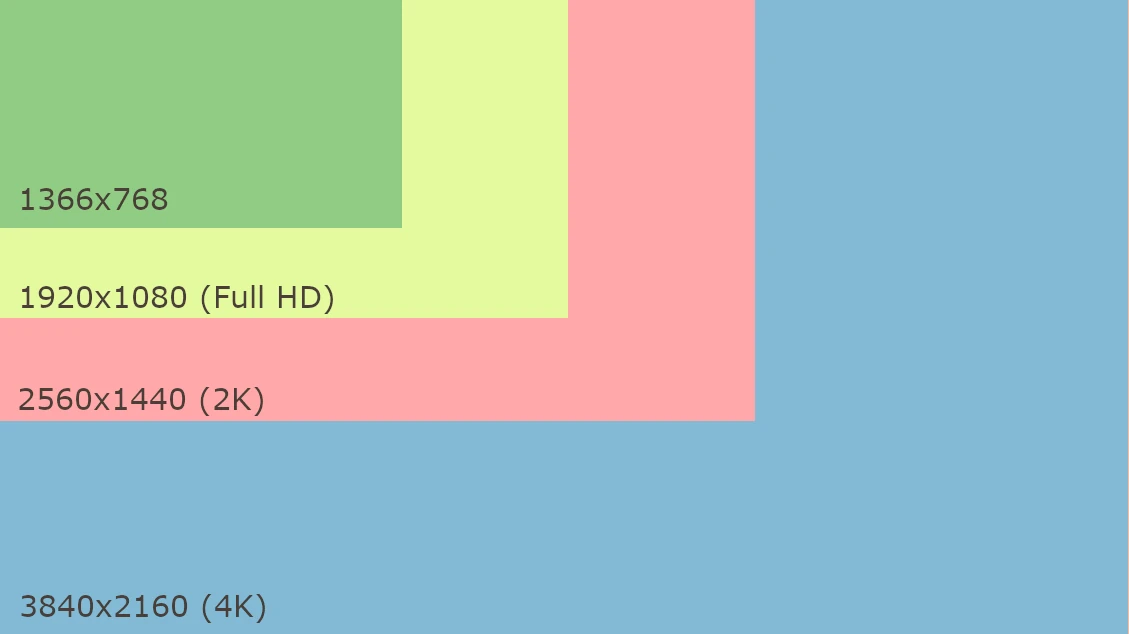
Resolution and Aspect Ratio
An essential aspect of resolution is the 'aspect ratio', which is the ratio of the width to the height of the screen. Common aspect ratios include 4:3, 16:9, and 16:10.
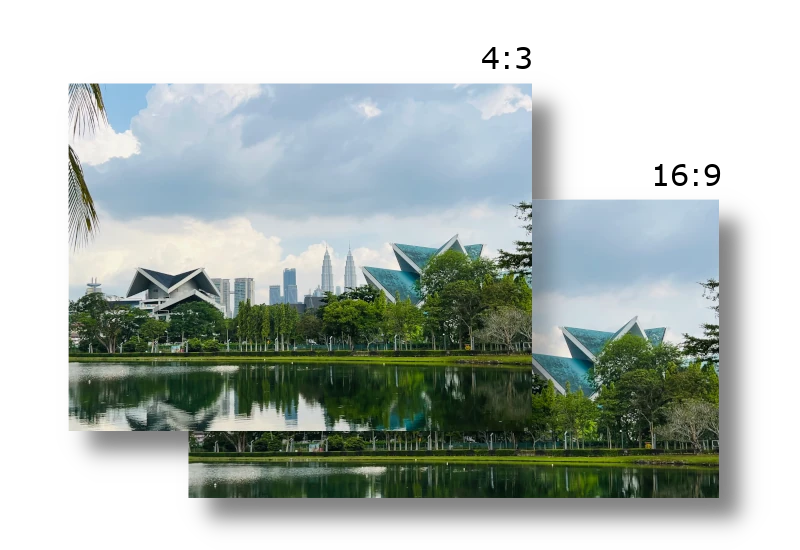
The aspect ratio is crucial because it determines the shape of the display and how images and videos fit onto the screen. A mismatch in aspect ratio between the source and the display can lead to stretching or shrinking of the image, which is a key consideration in remote access.
Remote Access Software and Resolution
Any remote access software, including Remote Utilities, operates on a dual-component system: local and remote. In the case of Remote Utilities, these components are known as the Viewer and the Host, respectively. The Host is installed on the remote machine, while the Viewer is installed on the local machine. During a remote session, the Host compresses the remote screen image into packets and transmits them to the Viewer. The Viewer then decompresses these packets and displays the image to the administrator who initiated the remote session. Special protocols and powerful compression algorithms are utilized to effectively transmit the remote desktop picture in real time, ensuring quality is maintained or any loss in quality remains at a tolerable level.
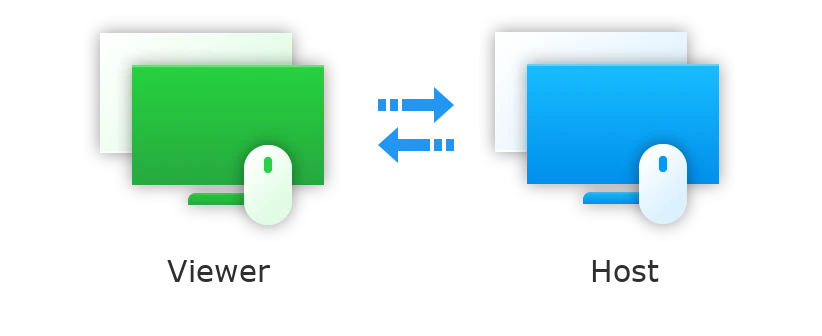
The higher the resolution, the more pixels the image contains. More pixels mean more pieces of information that need to be transmitted. Therefore, the higher the resolution, the more data the Host needs to transmit to the Viewer each second. However, this is a general rule, and a sophisticated algorithm can reduce the data load.
From the user's standpoint, the actual data transfer rates are less important than the visual representation of the remote screen on their local (Viewer) side. This depends on several factors:
- The screen resolution (both local and remote).
- The screen aspect ratio (both local and remote).
- Specific view mode chosen, such as normal, stretch, full screen, or full screen stretch, in connection properties.
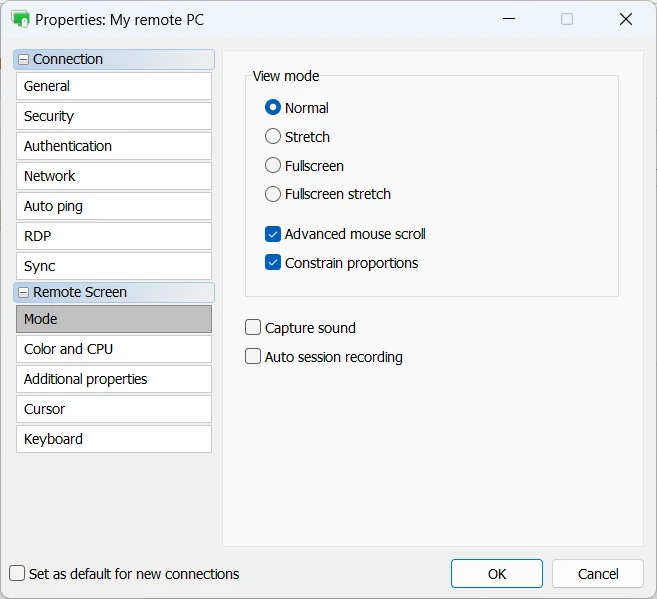
It is the interplay of these parameters that defines what the admin will see on their Viewer screen in the end. Further below, we'll consider a few typical combinations of these factors and how they result in what the admin sees on their screen.
Same Resolutions and Aspect Ratios
If both the remote and local screens have exactly the same resolution (say, Full HD 1920×1080) and aspect ratio (16:9), it means that the remote image can be shown pixel-to-pixel on the local screen. This is achievable provided that the user activates 'Full screen' (or 'Full screen stretch', which in this case will have the same effect) in the view mode options.
The number of pixels on the remote screen is equal to the number of pixels on the local screen, which means that there is no loss of 'pixel information'—only color information might be adjusted by changing the bit depth.
However, if the user chooses the 'Normal' view, the remote screen image will appear in a window on the local screen. Because the window frame occupies some screen space, the entire remote desktop image won't fit into the window, resulting in the appearance of two scrollbars — horizontal and vertical.
There is still a way to display the entire remote screen in the window - by selecting the 'Stretch' option. In this scenario, shrinking will occur as the program will need to 'fit' the remote pixels into the smaller screen space of the window, using an algorithm to downsize the image while maintaining clarity as best as possible.
Different Resolutions and/or Aspect Ratios
If either the resolutions or aspect ratios (or both) of the local and remote screens differ, this may lead to one of the following outcomes:
- Stretching: Typically, this occurs if the remote resolution is lower than the local resolution, meaning fewer pixels need to be displayed on a larger local screen area.
- Shrinking: If the remote resolution is higher than the local one and the user wants to see the entire remote screen on their Viewer screen, it means that the remote desktop image will have to be downsized (shrunk).
- Black space at the top/bottom, right/left, or around the screen: This can happen in cases of both stretching and shrinking.
In the event of stretching or shrinking, there's still a way to view the remote screen 'pixel-to-pixel' (without distortions) simply by switching to the 'Normal' view mode. In this mode, if the remote resolution is lower than the local resolution, black space will appear around the image. Conversely, if the remote resolution is higher than the local one, the program will display horizontal and vertical scrollbars.
Black space can also occur if the aspect ratios of the remote and local screens are different. In this case, even if the image is shown 'pixel-to-pixel,' the shapes of the screens differ, meaning that the remote 'shape' needs to be fit into the local 'shape'. This can only happen if the remote desktop image is downsized to fit the local screen.
Conclusion
Through this post, we've explored the intricacies of monitor resolution, including the critical roles of aspect ratio and pixel density. We've seen how Remote Utilities handles various scenarios, from identical screen resolutions and aspect ratios to differing ones, and how this affects the visual output on the admin's Viewer screen.
It's clear that a deeper understanding of these concepts can greatly enhance the remote access experience, allowing users to optimize their settings for the best possible display quality. As remote access becomes increasingly commonplace, such knowledge is not just beneficial but essential for anyone looking to leverage the full potential of remote connectivity tools.